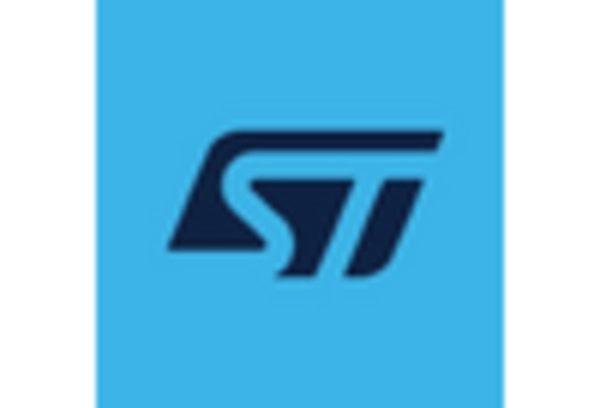Growth in Renewable Energy Sector
The Semiconductor Rectifiers Market is poised for growth, driven by the expansion of the renewable energy sector. As nations increasingly invest in solar and wind energy, the need for efficient power conversion systems becomes paramount. Semiconductor rectifiers are integral to the functioning of solar inverters and wind turbine systems, facilitating the conversion of generated energy into usable power. The renewable energy market is expected to witness a compound annual growth rate of over 10% in the coming years, which will likely bolster the demand for semiconductor rectifiers. This growth reflects a broader shift towards sustainable energy solutions, positioning the semiconductor rectifiers market as a key player in the transition to greener technologies.
Rising Demand for Energy Efficiency
The Semiconductor Rectifiers Market is experiencing a heightened focus on energy efficiency across various sectors. As industries and consumers alike seek to reduce energy consumption and lower operational costs, the demand for energy-efficient components, including semiconductor rectifiers, is on the rise. These devices are known for their ability to minimize energy losses during power conversion, making them essential in applications ranging from industrial machinery to household appliances. The Semiconductor Rectifiers Market, with projections indicating a steady increase in market value as industries adopt more sustainable practices. This trend underscores the importance of semiconductor rectifiers in achieving energy efficiency goals.
Advancements in Electric Vehicle Technology
The Semiconductor Rectifiers Market is significantly influenced by advancements in electric vehicle (EV) technology. As the automotive industry shifts towards electrification, the demand for efficient power management systems in EVs escalates. Semiconductor rectifiers are essential components in the power electronics of electric vehicles, enabling efficient energy conversion and management. The electric vehicle market is projected to grow at a compound annual growth rate of approximately 20% through 2025, which suggests a corresponding increase in the demand for semiconductor rectifiers. This trend indicates that manufacturers are likely to invest in innovative rectifier technologies to meet the evolving needs of the automotive sector.
Increasing Adoption of Consumer Electronics
The Semiconductor Rectifiers Market is experiencing a notable surge due to the increasing adoption of consumer electronics. As households and individuals increasingly rely on devices such as smartphones, tablets, and laptops, the demand for efficient power management solutions rises. Semiconductor rectifiers play a crucial role in converting alternating current to direct current, ensuring that these devices operate efficiently. In 2025, the consumer electronics sector is projected to contribute significantly to the overall growth of the semiconductor rectifiers market, with an estimated market value reaching several billion dollars. This trend indicates a robust demand for semiconductor rectifiers, as manufacturers seek to enhance the performance and energy efficiency of their products.
Technological Innovations in Power Electronics
The Semiconductor Rectifiers Market is benefiting from ongoing technological innovations in power electronics. As the demand for high-performance electronic devices grows, manufacturers are increasingly focusing on developing advanced rectifier technologies that offer improved efficiency and reliability. Innovations such as silicon carbide (SiC) and gallium nitride (GaN) rectifiers are gaining traction due to their superior performance characteristics compared to traditional silicon-based rectifiers. These advancements are expected to enhance the overall performance of power systems, leading to increased adoption of semiconductor rectifiers across various applications. The market for these innovative rectifiers is anticipated to expand, reflecting the industry's commitment to pushing the boundaries of power electronics technology.













